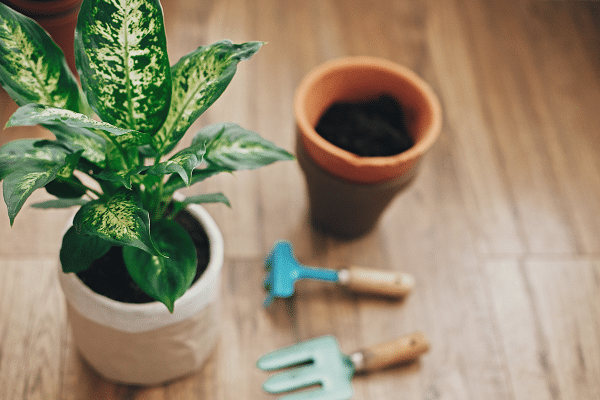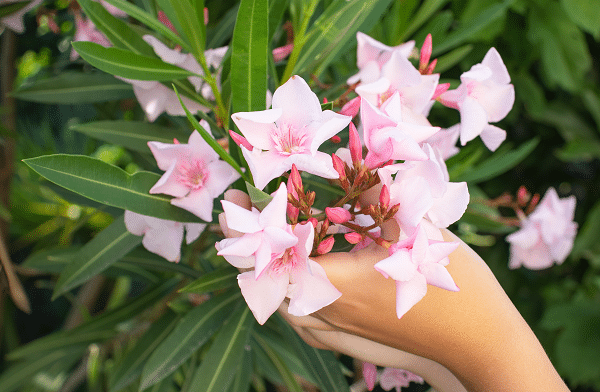Home gardening has skyrocketed in popularity, with more individuals looking to bring nature indoors. Carefully selecting the plants for an indoor garden ensures not only aesthetic harmony but also a healthy living environment. However, not all plants are meant to flourish indoors. Some may require conditions difficult to provide within the confines of a home, while others might pose health risks due to their toxicity. This blog post aims to help readers navigate the garden of potential indoor flora and identify several species that might be best left outdoors.
Contents
African Violet
African Violets, though stunning, can be particularly challenging to grow indoors. These delicate plants thrive in very specific conditions that are often hard to maintain within a home. They require high humidity and a significant amount of light, but not direct sunlight, to grow well. Moreover, their preference for warm temperatures makes them less suited to air-conditioned spaces or areas with drafty windows.
In addition to their particular care requirements, African Violets are susceptible to a number of ailments. They can easily fall prey to root rot if overwatered, and pest infestations can escalate quickly in an indoor environment. Root rot can lead to the plant’s demise, while a pest infestation can quickly spread to other houseplants. Hence, despite their alluring beauty, African Violets might not be the best choice for indoor gardens.
Dieffenbachia
Dieffenbachia, also known as Dumb Cane, is a popular houseplant with lush, variegated leaves. However, this plant holds a dangerous secret – its sap is toxic. If ingested or even just touched, it can cause mouth and skin irritation and numbness. This poses a significant risk for homes with curious pets or children who might be tempted to touch or taste the plant.
Furthermore, Dieffenbachia thrives in a consistent temperature range, typically between 60 to 75 degrees Fahrenheit. It can be difficult to maintain these temperatures indoors, especially in homes with central heating or air conditioning that may cause temperature fluctuations. In addition, Dieffenbachia needs high humidity, which can be a challenge to provide in a dry, indoor environment.
Foxglove
Foxgloves are beautiful, bell-shaped flowers that can add a pop of color to any space. However, these plants contain compounds that are toxic if ingested by humans or pets. The risks outweigh the benefits when considering growing them indoors, especially in households with young children or pets who could accidentally consume parts of the plant.
Apart from toxicity concerns, Foxgloves have care requirements that are not easily met indoors. They prefer full sun and well-drained soil, conditions typically found in an outdoor setting. Trying to recreate these conditions inside could lead to plant stress and subsequent health issues, making Foxgloves less than ideal for indoor gardening.
Chrysanthemum
Chrysanthemums, with their vibrant flowers, are often a tempting choice for indoor gardening. However, these plants are known to release compounds into the air that might cause allergic reactions in some people. This includes skin rashes, eye irritation, and respiratory symptoms. For individuals prone to allergies, growing Chrysanthemums indoors might exacerbate their conditions, making these beautiful plants a less desirable choice for indoor gardening.
In terms of care, Chrysanthemums need a lot of sunlight, ideally direct sun for at least five hours a day. They also prefer well-aerated spaces as they are prone to fungal diseases. Given these requirements, the plant might not flourish in typical indoor settings, especially in rooms lacking ample natural light or air circulation. Their need for specific care, combined with potential health concerns, makes Chrysanthemums a less than ideal choice for the indoor gardener.
English Ivy
English Ivy, with its trailing vines and lush foliage, might seem like a great plant to hang in a corner or decorate a shelf. However, it has characteristics that make it unsuitable for indoor cultivation. One issue is its invasive nature. If not strictly managed, English Ivy can quickly overtake other indoor plants, and its fast-growing tendrils can even cause damage to walls and other structures.
In addition, English Ivy can harbour mold spores, leading to poor indoor air quality. While these plants are known to clean certain toxins from the air, their dense foliage can create a humid microclimate, ideal for mold growth. The mold spores can trigger allergies in sensitive individuals and create a less than healthy environment. The potential for such concerns might outweigh the aesthetic appeal of English Ivy when considering it for indoor cultivation.
Bonsai
Bonsai trees, miniature versions of larger tree species, require a level of care and attention that might be difficult to maintain for indoor gardeners. These unique plants necessitate precise watering, feeding, and trimming practices to maintain their aesthetic form. However, maintaining the delicate balance between under- and over-caring can be challenging and, if not done correctly, can cause the plant to become stressed and possibly perish.
In addition to their complex care requirements, Bonsai trees need specific lighting and humidity conditions that are not typically found indoors. They generally thrive under bright, indirect light and high humidity – something difficult to recreate inside a home. Considering these factors, Bonsai trees might be best appreciated in an outdoor setting or in the hands of an experienced indoor gardener.
Oleander
Oleander, with its attractive flowers and evergreen leaves, might appear to be a desirable addition to an indoor garden. However, every part of this plant, from the leaves to the roots, contains toxins that can be extremely harmful if ingested by humans or pets. The risks posed by this plant are significant, making it unsuitable for indoor cultivation, especially in households with children or pets.
Aside from its toxicity, Oleander prefers conditions more commonly found outdoors. It needs plenty of sunlight and well-drained soil. These conditions can be difficult to replicate in indoor settings. Therefore, despite its ornamental appeal, Oleander is not a recommended choice for an indoor garden due to its high toxicity and specific care requirements.
Conclusion
Choosing the right plants for indoor gardening is a task that requires careful consideration. It involves more than just picking plants based on aesthetics; the plant’s care requirements, potential for causing allergies or harm, and its overall suitability for indoor conditions should also be considered. Plants such as African Violets, Dieffenbachia, Foxgloves, Chrysanthemums, English Ivy, Bonsai, and Oleander may not be the best choices for indoor gardening due to the reasons discussed in this blog post. The objective here is not to discourage the passion for indoor gardening, but rather to emphasize the importance of making informed choices when selecting indoor plants. After all, a happy, healthy indoor garden contributes to a happy, healthy home.






